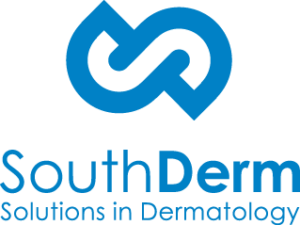Excessive Sweating
Overview
At SouthDerm, we understand the impact that sweating can have on people’s lives. Treatments are available for all types of excessive sweating, including sweating of the armpits, hands, feet and face. Our specialist dermatologists located at Kogarah, Sydney can help you with your sweating issues.
Sweating is a very common problem and often people either don’t realise it can actually be a medical condition that can be treated. If you suffer from excessive sweating, you are not alone. Many people have this condition, known as hyperhidrosis. People with this condition sweat a lot even during cool weather or when they are not doing any activity. It usually affects the underarms, palms of the hands, soles of the feet or face.
WHY DO I HAVE EXCESSIVE SWEATING?
Excessive sweating seems to be caused by overactive sweat glands.
The condition affects 2–3% of the population and often runs in families.
Sometimes excessive sweating can be caused by another medical condition, for example, menopause, heart or lung disease, thyroid problems, a nervous system disorder, low blood sugar, some types of cancer and infectious diseases, or certain medications.
EXCESSIVE SWEATING CAN BE SUCCESSFULLY TREATED
Treatments are available for all types of excessive sweating, including sweating of the armpits, hands, feet and face. Treatment for excessive sweatingis available from the specialist dermatologists at SouthDerm.
WHERE CAN I GET MORE INFORMATION ABOUT EXCESSIVE SWEATING?
SouthDerm works closely with the Sweat Free Clinics Australia wide. You can get more information on sweating at www.sweatfree.com.au Click on the treatment tab at the top of this section for more information on treatment for sweating.
All medical and skin cancer treatments are carried out in our southern Sydney, Kogarah, skin cancer and cosmetic surgery clinic.
Treatment
HOW EXCESSIVE SWEATING IS TREATED
- Deodorants: deodorants work by blocking the sweat duct so that less sweat is released. They are used for underarm sweating as well as sweating of the palms of the hands, soles and the feet and face.
- Special creams: specially formulated creams can be individually made for each patient and used on sweaty hands, feet, face and places with excessive sweat glands. Most of these creams work by reducing the activation of nerves that cause sweating.
- Muscle relaxant injections: excessive sweating can be treated with the same injections that are used to relax facial muscles for wrinkle removal. This medicine blocks the release of a chemical that causes sweat and is a very successful treatment for sweating. It has been shown to be effective in 95% of patients and one treatment usually lasts for 6–7 months. The Australian government provides a rebate for this treatment when used for armpit sweating, as long as the treatment is provided by an accredited specialist dermatologist. This treatment and rebate is available from SouthDerm (see information on Medicare rebate, below).
- Low level electrical current (ionthophoresis): a small electrical current is applied to the hands or feet while submerged in water, causing the sweat glands to reduce their production of sweat.
- Surgery: if all other treatments don’t meet the desired result, surgery may be recommended. Surgery is generally successful at disrupting the nerves that stimulate the sweat glands so they produce less sweat.
Medicare rebate for sweat treatments
Medicare is helping people with severe underarm sweating. Excessive sweating (hyperhidrosis) of the armpits can be treated with the same injections that are used to relax facial muscles for wrinkle removal. If the prescription deodorant Driclor does not work or you can’t tolerate it, a Medicare rebate may be available for these injections when the procedure is carried out by a Medicare-approved specialist dermatologist.
SouthDerm specialists Dr Robert Rosen, Dr Howard Studniberg and Dr Eleni Yiasemides have been approved to treat patients with severe underarm sweating under this special rebate scheme. This means you will only pay a small part of the costs for the injection treatment. If you qualify you can receive up to three treatments per year. Each treatment may last for 3–12 months.
Images



